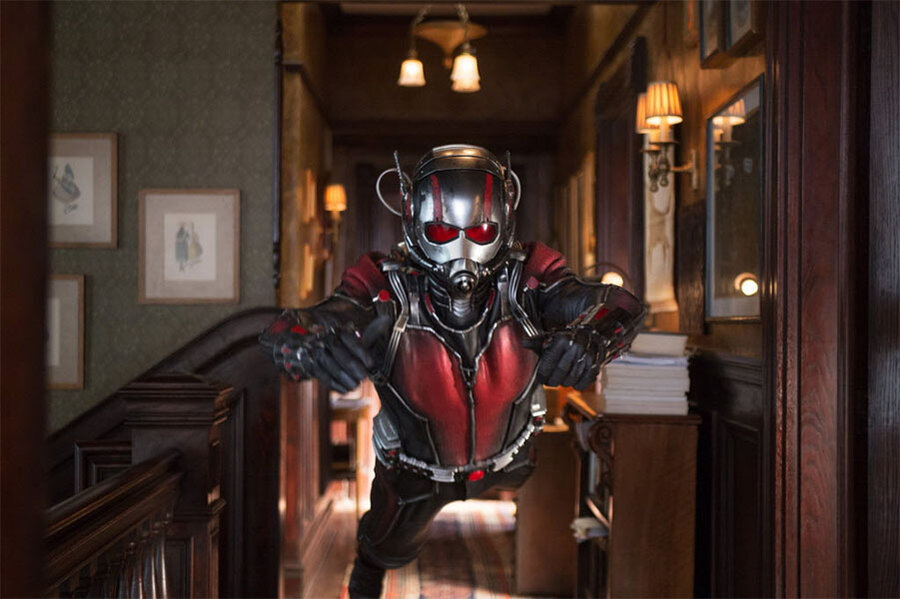'Ant-Man' director: Superhero tale is 'a street-level story... I hadn't really seen'
Loading...
At long last, "Ant-Man" is here.
After assembling the Avengers – twice – and traveling to space with the Guardians of the Galaxy, Marvel Studios' latest endeavor seems like a decidedly small affair, yet it took the studio longer to bring the incredible shrinking superhero to the big screen than it did to boot up Iron Man, enlist Captain America, or nail down Thor for their cinematic debuts.
The storied history of the "Ant-Man" film goes back eight years when "Shaun of the Dead" and "Hot Fuss" director Edgar Wright and writer Joe Cornish were originally attached to the project. After working on several drafts of the script, Marvel and Wright declared last May before production was set to start that they had parted ways "due to differences in their vision."
A little over a year later, "Ant-Man" has arrived in theaters to tell the story of how do-gooder thief Scott Lang (Paul Rudd) inherited a high-tech get-up from scientist Hank Pym (Michael Douglas). The pair teams up with Pym's stern daughter, Hope Van Dyne (Evangeline Lilly), to take down unhinged former protégé Darren Cross (Corey Stoll), who has a suit of his own.
Did the studio end up with the "Ant-Man" it wanted?
"Absolutely," said Kevin Feige, president of Marvel Studios. "As we had always hoped, this version stands on its own but firmly within the cinematic universe. I've had people come out of screenings – women in particular – telling me that it's their favorite Marvel movie."
Despite his status in comic book history as a founding member of the Avengers, Ant-Man has never stood quite as tall as Spider-Man, Captain America, or Hulk in the greater pop-culture realm. That's primarily because the character isn't quite as charismatic as Peter Parker or Tony Stark, and his superpowers are, well, a bit weird. He shrinks, expands, and talks to bugs.
For the filmmakers, Ant-Man is right where he should be.
"I liked that after 'Avengers: Age of Ultron,' which was amazingly big with cities falling out of the sky, this was a street-level story," said "Bring It On" director Peyton Reed, who was brought on after Wright's departure. "Scott Lang is a normal guy with no powers, and he's sucked into this bizarre world. That was a cool arc that I hadn't really seen in a Marvel movie."
Besides Reed's last-minute addition, Rudd and his "Anchorman" writer-director pal Adam McKay were tapped to rework the script. Feige said they kept the original "spine of the story" from Wright and Cornish about a criminal recruited by an older mentor to inherit the mantle of Ant-Man. (Wright and Cornish are credited with story and co-writing credits.)
Reed said the final version of the film incorporates several new elements, such as exploring what happens if Ant-Man shrinks to a subatomic level, expanding the role of Hope Van Dyne, and introducing an encounter with an Avenger, as well as injecting a pivotal cameo by the character Janet Van Dyne, the wife of Pym who serves as the superhero Wasp in the comics.
"Peyton Reed, Paul Rudd, Adam McKay, and a handful of other writers completely turned the movie into what we hoped it could be," said Feige. "When people tell me their favorite parts of the movie, whether it's an emotional beat, a favorite joke, or a visual sequence, all of that came from the reworking that Paul and Adam did, overseen by Peyton."
Unlike most Marvel films, there are no Infinity Stone appearances or third-act dogfights involving aliens or robots. (There is, however, a troop of adorable flying ants.) Rudd's Lang doesn't even serve quite as many zingers as Robert Downey Jr. delivers as Tony Stark in the "Iron Man" and "Avengers" films, or as Chris Pratt gets away with as Peter Quill in "Guardians of the Galaxy."
"I wanted to do something different and a little less expected," said Rudd. "When you hear that Adam and I are going to be working on the script, I think everyone thought, 'Oh, this going to be a joke-fest.' That's our background. We worried about the character and the story first. You have to balance it."
The biggest difference for "Ant-Man," which centers on Lang's attempt to nab Cross' technology, is that it's as much of a family drama as it is a heist film or superhero flick. Throughout the movie, Lang seeks to reconnect with his daughter, Cassie (Abby Ryder Fortson), after being released from prison, while Pym and Hope work to reconcile their own strained relationship.
Reed, whose credits include "Yes Man" and "The Break-Up," never felt minimized while working on "Ant-Man."
"I was thrilled to discover in the Marvel method that there's a lot of leeway," said Reed. "They encourage weird, idiosyncratic methods. 'Ant-Man' is their 12th film. They haven't done it all, but they've done a lot. They're creatively hungry to do different stuff. I found that very liberating."
"Ant-Man" will be the latest test to see how far Marvel can push the genre following last year's successful space jump with "Guardians of the Galaxy." The studio apparently already has big plans for Ant-Man. Rudd will reprise his role in next year's "Captain America: Civil War," which depicts a divide between superheroes siding with Cap and those aligning with Iron Man.







